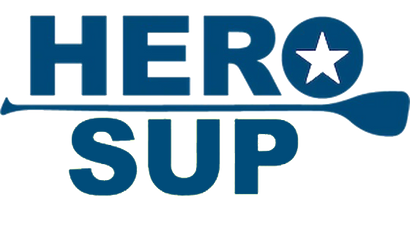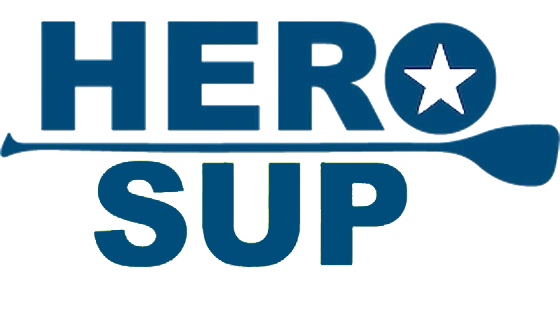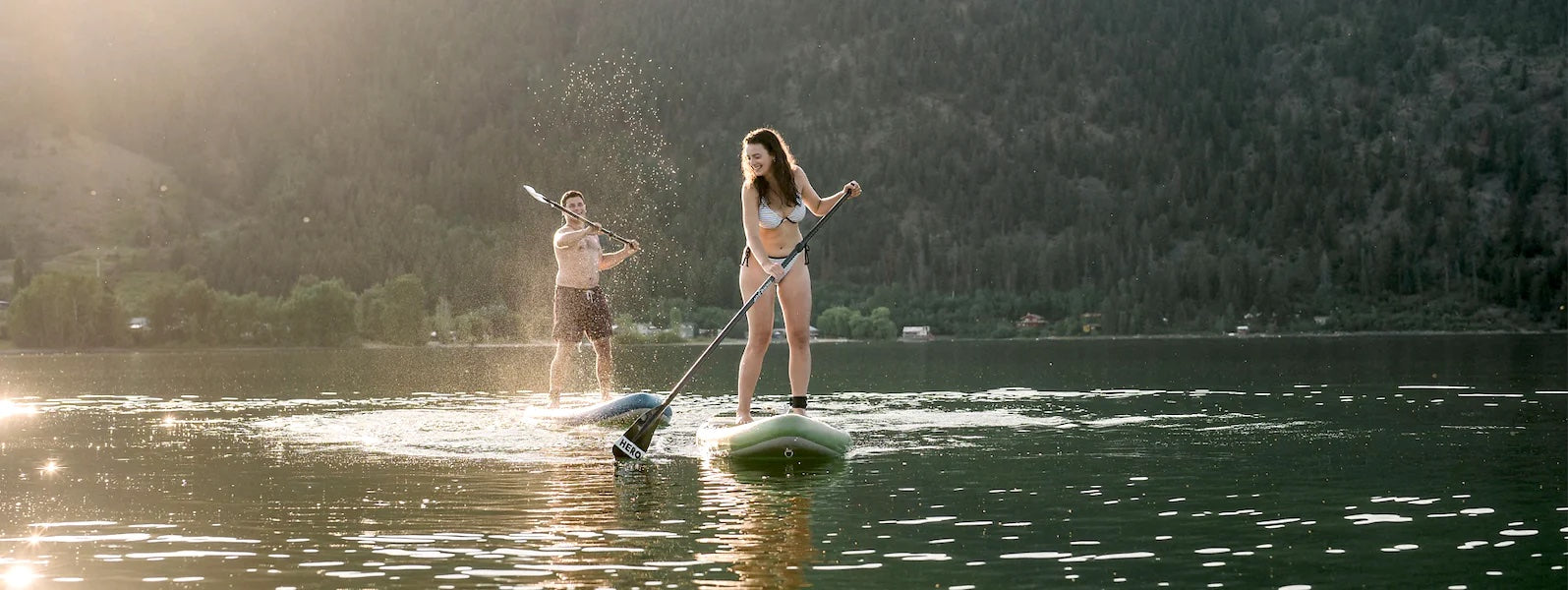10 Most Common Beginner Paddleboarding Mistakes
Brand new paddle boarders and even some notice paddlers tend to make a lot of rookie mistakes that can hinder their paddling progress. That’s totally okay!
Unless you’ve taken some SUP lessons mistakes are very common.
Below are ten of the most frequent stand up paddling mistakes to be aware of.
10 ROOKIE PADDLE BOARDING MISTAKES
Avoid these mistakes to improve your skills and get the most out of your paddle boarding experience.
1. Holding The Paddle Backwards
Paddling with your paddle’s blade facing the wrong way is by far the most common newbie blunder.
The curve of the blade should be bent away from you. It seems counter intuitive at first but the blade facing away from you will provide better tracking and speed.
If you paddle with the angle of the blade facing towards you’ll be pulling the water up in a scooping motion which will only cause drag and slow you down.
So take note of the blade angle next time you are on the water in order to paddle much more efficiently.
2. Hands Too Close Together
Most people figure out that one hand goes over the top T-grip on the handle however they often place their other hand too close up on the shaft of the paddle.
If your hands are too close together it will be more difficult to have an efficient paddling stroke and it could also affect your balance.
In order to find the proper width between your two hands you’ll first need to lengthen your paddle to the correct height for your size.
For regular recreational paddling your paddle length should be approximately 10 inches above the top of your head.
Once you’ve set your paddle length then hold the paddle up above your head. Place one hand on the t-bar grip and the other hand comfortably on the shaft so that your elbows are at a 90 degree angle.
3. Using Only The Tip Of The Blade
Many paddlers will only use the tip of the blade and pull the paddle too far back essentially throwing the water behind you. Paddling this way is inefficient and slow.
A proper stroke requires reaching forward and slicing the whole blade into the water, pulling it back and then removing the blade from the water as it reaches the line with your feet. Then reach forward again and repeat.
4. Holding The Paddle Too Far From The Board
If you’re holding your paddle too far out away from the board or at an angle then you’ll find it’ll be tough to keep paddling in a straight line.
Instead hold the paddle vertical, reach out slightly over the rail and pull the blade back alongside the board in a straight line.
This way you’ll be able to get a good forward projection and keep the board pointing straight.
5. Looking Down Instead Of Looking Forward
New paddle boarders will often feel wobbly when first standing up and as they slowly paddle forward they may keep their head and their gaze looking downwards trying to find their centre of gravity.
Instead once you get yourself in the standing position try looking forward and steady your gaze on something out toward the horizon.
This will keep you more steady and improve your balance as you practice more.
When first learning try not to look around too much as breaking your forward gaze could cause you to become unbalanced until your legs get steady.
6. Not Centering Your Weight On The Board
Feet position is important and most often you’ll want to centre your weight on your paddle board for optimal balance and performance.
If you are standing too far forward you’ll cause your rocker to dip and this will effect your boards ability to glide over the water. If you stand too far back your tail will sink.
This will cause drag and make your board turn. Instead place your feet hip width apart on either side of the center handle.
The handle is typically perfectly balanced in the weight center of the board so that is a good marker for your feet.
7. Not Wearing A Leash And A Lifejacket
Ignoring these safety items is a huge no-no. Don’t think it’s cool to be seen wearing a lifejacket? Thing again. What’s not cool is drowning and yes it can happen even in busy lakes and calm rivers.
The SUP leash usually comes with your paddle board package. Secure one end to your ankle and the other end to the back D-ring on the tail of your board.
The leash does not get in the way and it ensures that your board will stay close to you if you fall in the water. It’s critical to always use your leash.
As for a lifejacket there are several SUP specific options to explore so you can make sure you get a fit that is comfortable and secure for your body type, skill level and the type of paddling you’ll be doing.
You can check out SUP specific lifejacket options here. A leash and lifejacket should be the minimum safety items you have out with you when paddleboarding.
Other safety items to consider are a whistle, a tow rope and safety lights if paddling in gloomy weather or darker conditions.
Set the trend with your friends and make sure safety is top priority when out on the water.
8. Paddling With Only Your Arm Muscles
This is very common for new paddlers and a sure fire way to exhaust your arm muscles quickly.
A far more efficient paddle stroke is to use your core and back muscles so that you are using your body weight to propel yourself forward through the water.
Reach your paddle blade forward and submerge it in the water up by the nose of your board.
Then tighten your core as you lightly pull the shaft of the blade back and push with your top hand to propel yourself forward.
Focus on using your core muscles to do this. As a side bonus if you practice paddling this way your core and back muscles will tighten and build up quickly.
Watching a quick video on Youtube may be very helpful to understand how to master your paddling stroke and propel your board forward in the most efficient way.
9. Paddling Too Far Downwind
I think we’ve all done this at some time or another. You head out for a nice day on the water, there’s a slight breeze and you end up paddling downwind with the breeze against your back.
With a light wind it can be easy to paddle further than planned as the wind easily helps to propel you forward as you are paddling.
Before you know it you’re turning around to head back and you’re caught trying to paddle into the wind, which can be exhausting and difficult.
Struggling to get back to where you began can be quite scary depending on how strong the wind is. This is an awful position to be caught in.
Keep an eye on the weather and watch which way the wind is blowing. Also keep in mind that the direction of the wind can change quickly.
Our recommendation is to head into the wind for the first half of your trip so that the wind can help bring you back as you return.
10. Kicking Legs Under The Board When Getting Back On From The Water
Guess what, falling off your board can happen. In fact it happens to the best of us and that is totally okay.
As long as you are wearing your lifejacket and your leash and as long as you know how to get back on your board then there is nothing to worry about.
The Wrong Way: One of the biggest mistakes people make is kicking their feet underneath their board and trying to use pure arm strength to pull themselves up.
That’s the hard way and usually ends up with your board tipping and you falling back in the water.
The Right Way:. A much easier way to re-mount your board from the water is to kick your legs behind you away from the board while your hands are flat on top of the centre of the board.
Kick your legs until your body is laying sort of flat. Then essentially you want to slither your way onto the board by sliding your chest onto the board first then swinging your legs up towards the tail.
Once you feel balanced and steady you can get back on your knees and stand up safely.
If you have trouble swimming or aren’t very athletic it would be wise to always go out with a paddling partner who can help keep your board steady and offer a hand to help you get back on your board quickly.
SUMMING IT ALL UP
There you have it, there’s no reason to look like a total beginner even if you are just getting started.
By avoiding these newbie mistakes you will not only improve your paddling skills and paddle more efficiently but you’ll look great doing it!
Share these tips with your friends and above all else, please stay safe out there.
HAPPY PADDLING!
READ MORE: 10 PRO TIPS FOR BEGINNER PADDLE BOARDERS
SEE OUR : BEST BEGINNER ISUP COLLECTION
Also in KNOWLEDGE
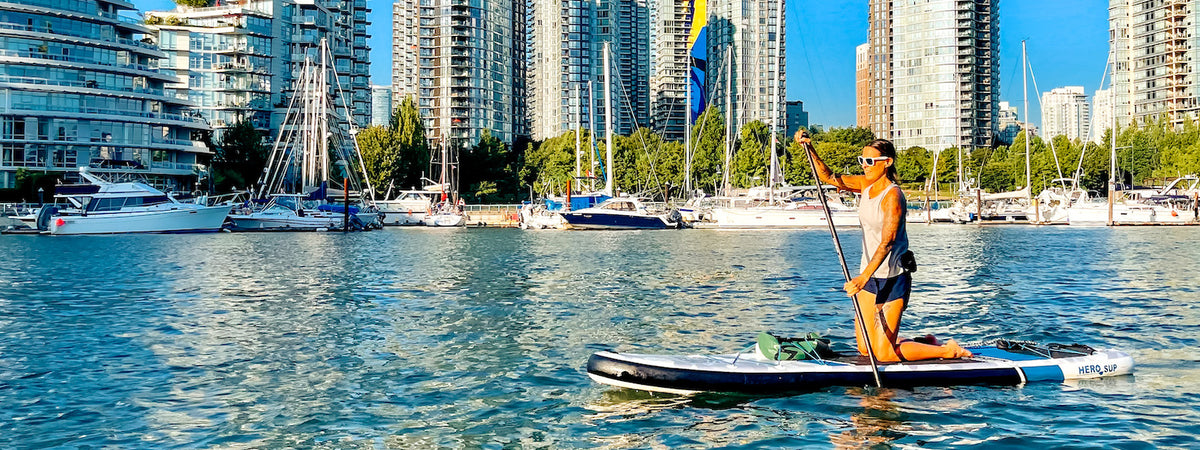
10 Easy Tips For Beginner Paddle Boarders
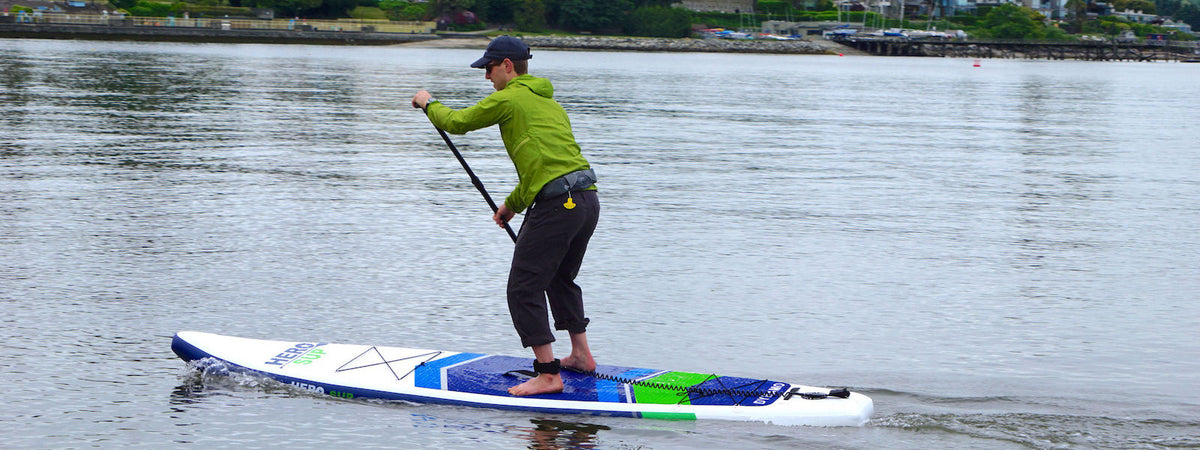
5 Simple Steps To Improve Your Paddle Board Technique
Follow these 5 simple steps to paddle like a pro.

How Paddle Boarding Benefits Your Mental Health
Did you know that paddle boarding can be extremely effective in helping to deal with stress and anxiety, depression, PTSD and trauma?
